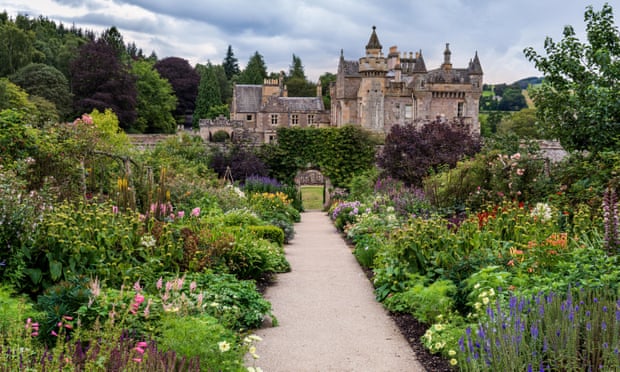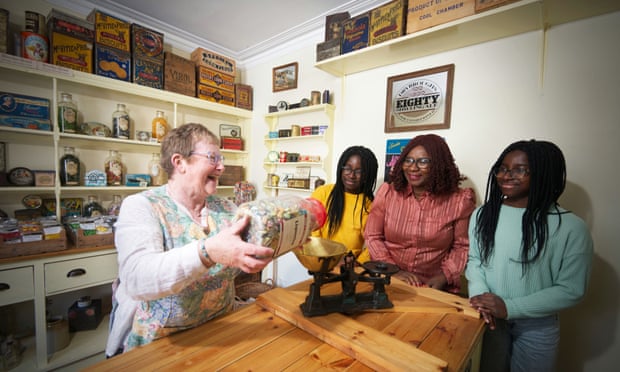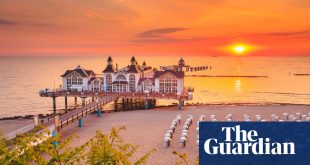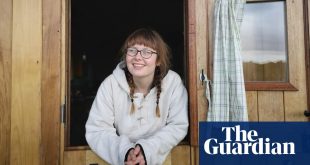Scotland, which is currently celebrating the Year of Stories 2022, is steeped in history and legend. It’s also a most exciting country, with formidable landscapes, exciting cities and, most importantly, great imaginative wealth. Countless writers, songmakers and poets have been inspired by its mountains, its castles, its heroes and battles, its fairies and monsters. The line between the past and the present, and between what is real and imaginary, feels more porous here. My sons, who came north frequently on family holidays, loved the sense that history in Scotland somehow feels more present and real – you can see armour, you can climb around old moats, you can touch portcullises. Really, there is nowhere quite like Scotland for living myth. When I was a child growing up in Edinburgh, my zoologist father was fairly regularly fielding perfectly serious questions about Nessie, the Loch Ness monster.
I would start any trip to Scotland in Dumfries and Galloway – all of southern Scotland has an extraordinary wealth of stories and attractions that children will love. Some of the country’s greatest writers, such as Robert Burns and Robert Louis Stevenson, had close connections with the area. There would be no better launch pad than Wigtown, a pretty coastal town in the south-west and Scotland’s answer to Hay-on-Wye. Wigtown has more than a dozen secondhand bookshops and the annual Wigtown Book Festival hosts shows and workshops for children as part of the 10-day literary celebration in Scotland’s National Book Town. Just outside the town lies the magnificent stone circle of Torhouse – home to the tomb of Galdus, the mythical Scottish king.

Some of the Wigtown Book Festival’s children’s events take place in Dumfries, which is about an hour’s drive east. Here you should definitely visit Moat Brae: a beautiful, fully restored Georgian house and garden that JM Barrie visited regularly as a child and apparently inspired him to write Peter Pan, which has been transformed into the National Centre for Children’s Literature and Storytelling – a museum and interactive playspace-cum-library. The house has a dressing up box and drawers to open, keyholes to peer through and little cubby holes and sprawling bean bags where children can settle down with a book from the collection. Outside there is a huge pirate ship climbing frame and a garden scattered with wire figures bringing Barrie’s characters to life. Children can also go in search of the 10 crocodiles cunningly hidden in the grounds.
Another great Scottish storyteller was the novelist Sir Walter Scott, and nowhere could be more entrancing – or more intriguing – than his country house Abbotsford, near Melrose in the Scottish Borders. This is Scottish baronial architecture at its most extreme: a gothic extravaganza of crowsteps, turrets and gargoyles. In the front hall stand dummies in full armour brandishing broadswords and all around are deer antlers and animal skulls. Scott collected everything from fine china to exquisite lace doilies. But he had a special love for weaponry; here there is a panoply of swords, poniards, battle axes, maces, blunderbusses, flintlocks, even a breastplate with a bullet hole – and it is this kind of gruesome detail that children love.

Equally atmospheric, but very different and on a much smaller scale, is Smailholm Tower, just half an hour’s drive from Abbotsford. Smailholm was built in the 15th century when the Scottish Borders were overrun by “reivers” (or cattle raiders) and my boys used to love clambering around on the great stony mound that the tower sits on. At Smailholm you have a very real sense of living in a fort. The walls are two and a half metres thick, so inside it feels tiny and there is only really one room per floor. Also, the very steep, spiral staircase has uneven steps – a common feature of Scottish castles and intended to wrong foot any attacker.
Scott knew Smailholm well. He had stayed in the nearby farm as a child and later published an anthology of border ballads – love stories, tales of fairies, feuds and battles. These ballads have been the inspiration for an exhibition of very beautiful dolls made by the artist Anne Carrick and on permanent show at Smailholm. The glittering, diaphanous horses of the Faerie Queen are especially wonderful.
Just over an hour’s drive north and you come to Edinburgh, the childhood home of Robert Louis Stevenson and where JK Rowling wrote some of the Harry Potter books in cafes near the Royal Mile (the historic street connecting Edinburgh Castle to the Palace of Holyroodhouse). The street itself is dotted with wonderful sites for children, including the Museum of Childhood, which houses a substantial collection of toys, games, dolls and more dating from the 19th century to the present. At the castle they can see a real portcullis, a trebuchet and an enormous stone cannonball believed to have been slung at the walls during the siege of 1296. And at 1pm every day you can watch the One o’Clock gun being fired by a gunner in full regimental regalia. The noise is incredible – it can be heard all over the city.
At the Scottish Storytelling Centre in John Knox House (parts of which date back to the late-medieval period, making it the oldest building on the Royal Mile), children can explore a 17th-century house and draper’s shop, watch puppet shows and listen to professional storytellers. Farther up the Royal Mile lies Gladstone’s Land – a quirky old tenement building where, especially until the New Town was built in the 18th century, people lived higgledy-piggledy on top of each other. Children are often very open to sensory experiences and this makes Gladstone’s Land a great place to visit, as the museum has tried to reproduce authentic sounds and smells on each floor of the building.

No trip to Scotland is complete without a visit to the Highlands. Going directly north from Edinburgh you reach Perthshire first, where Beatrix Potter spent many childhood holidays and where, in Birnam, outside Dunkeld, you can visit the interactive Beatrix Potter Garden – which celebrates the fact that the tale of Peter Rabbit was inspired by Potter’s time in the village. Then head on to the fascinating Badenoch region and visit the Highland Folk Museum at Newtonmore. The open-air museum is a scattering of buildings that recreate Highland life from the 1700s through to the 1950s. The old blackhouses, where the Highlanders lived with their cattle, are astonishingly primitive – it is said that the term “blackhouse” derives from the fact they were built without chimneys, thus coating the interiors in soot – and the enthusiastic team of dressed-up actors are very well informed. The more modern houses are also interesting – you can trace the gradual emergence of a more comfortable life over the 18th and 19th centuries. But the pièce de résistance is the 1930s school house where children can try out copperplate handwriting exercises using pen and ink.
The places mentioned above are only a taste of what Scotland has to offer families with children. There are countless other stories to discover, along with child-orientated castles, folk museums and battlefields to visit. For at most of these places, history, myth and legend tend to mingle – and that, I suspect, is what gives them their very special appeal. If you want your child to imagine more deeply, take them to Scotland.
Amanda Mitchison is a children’s writer and novelist. Her latest book The Wolf Hunters is an adult crime novel set in the Scottish Highlands.
Scotland’s Year of Stories 2022 spotlights, celebrates and promotes the wealth of stories inspired by, written, or created in Scotland. More info on the programme can be found here
 Top Naija News: Nigerian News, Breaking News Nigeria and World News Top Naija News is a daily news publication in Nigeria, delivering the latest breaking news in Nigeria and around the world.
Top Naija News: Nigerian News, Breaking News Nigeria and World News Top Naija News is a daily news publication in Nigeria, delivering the latest breaking news in Nigeria and around the world.



